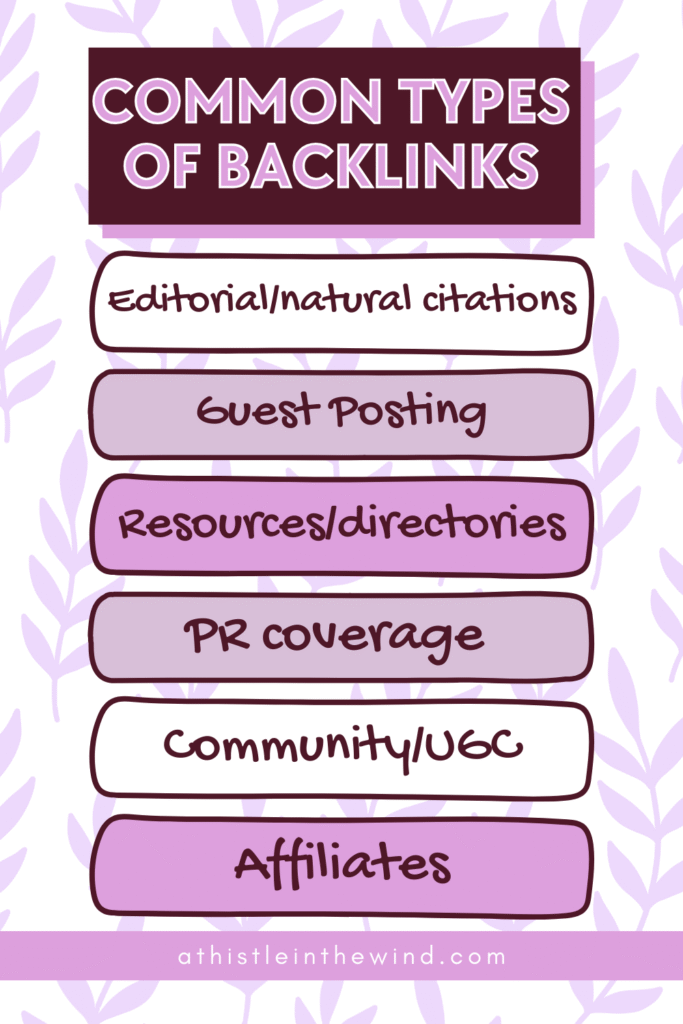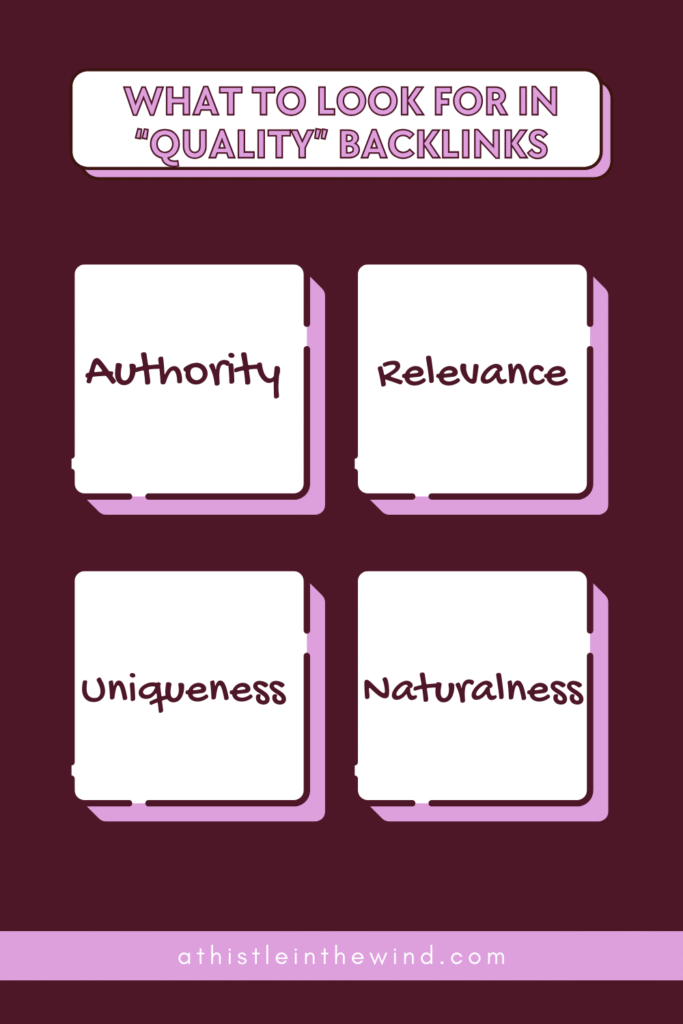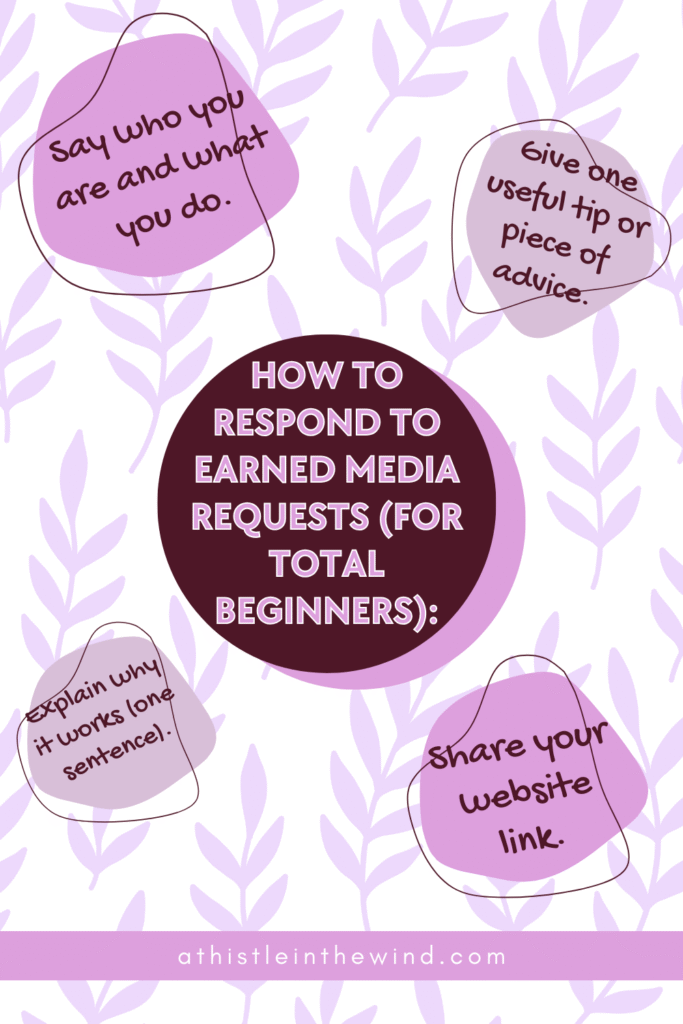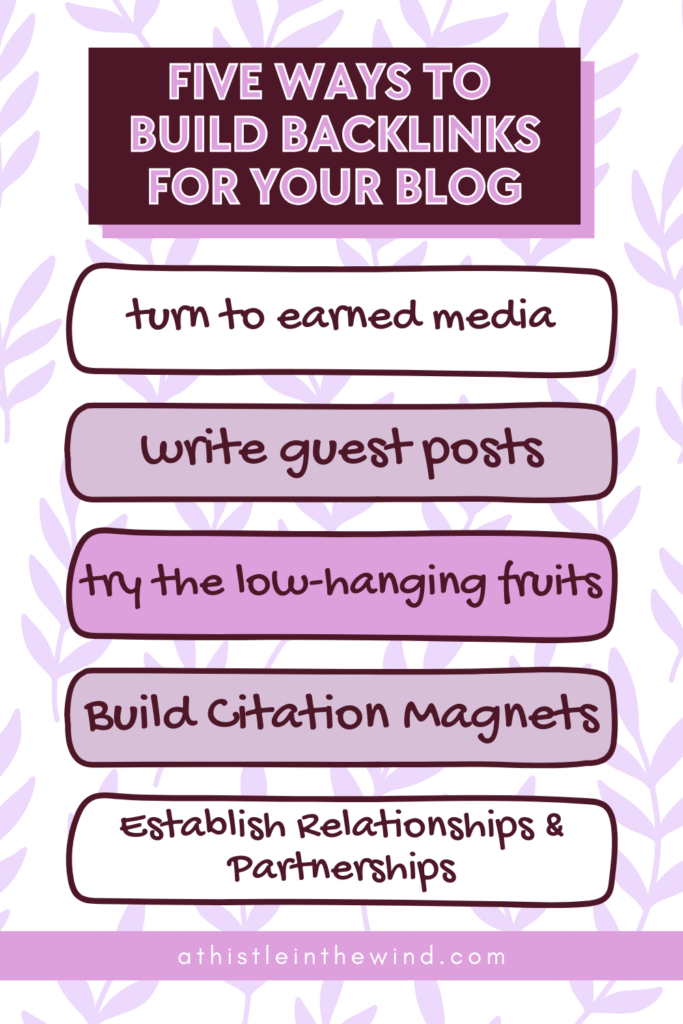How to Build Backlinks to Your Blog (the Right Way)

I’m super busy these days with work, a new freelance gig, and summer school. And naturally, one of the things I tend to do when I’m super busy is further burden myself with more stuff. So, I’ve made the executive decision to redesign this blog for all my new readers. Naturally, the first thing I did was run an SEO audit—in fact, I’m still knee-deep in it—and realized I should probably look into ways to build backlinks.
I hadn’t really focused on backlinking much here. I’d thought about guest posting, and all, but to be honest, I just didn’t have the time or the audience to care much about it. However, thanks to consistently posting every week (or two) for the past eight months now, I’ve managed to get a decent audience here (will do a full rundown at the end of this year) and now I’m seriously thinking of ways to actually take ATITW to the next stage.
Don’t worry; no dumb course offerings will ever be available on this blog. We’re committed to being a free resource for as long as possible. But during my general audit of the site, I started looking into backlinks.
And here’s the thing: I know how to get backlinks. Got trained for it back in the day. But things have drastically changed since 2020, and I learned quite a few things.
This blog is the result of some of those findings. So, if you’re a blogger or a newbie SEO trying to figure out how to build backlinks, this one’s for you. Let’s get started.
What Is a Backlink?
According to Collins Dictionary, a backlink (also called an inbound link) is a link on one website that points to a page on another website.
Practically, it does two jobs at once: it can send real people to your content (referral traffic) and it serves as a public citation that search engines can interpret as evidence of relevance and credibility for a given topic. In a landscape where algorithms look for trustworthy, on-topic sources, a single high-quality backlink can outweigh a ton of weak ones which is super important for your blog, especially if it’s new.
Anatomy of a Backlink
A backlink is an <a> tag with three core parts and some context around it. The anchor text (the clickable words) tells your readers and search engine crawlers—AI models—what they’ll get. The destination URL is where the click lands (deep links to specific, useful pages tend to perform best).
An optional rel attribute labels the relationship: nofollow, sponsored, ugc, or none (often treated as “follow”). Placement matters too: links embedded in main content usually carry clearer context than those in nav, sidebars, or footers.
- Anchor text — visible, clickable words.
- Destination URL — the exact target page.
- Rel attribute (optional) — nofollow, sponsored, ugc, or none.
- Placement — in-content > nav/footer/sidebar for context.
Common Types of Backlinks
- Editorial/natural citations — earned references inside another author’s article.
- Guest-post contextual links — placed within useful pieces you contribute.
- Resources/directories — lists and vendor or “where to learn/buy” pages.
- PR coverage — news stories, interviews, or features that cite your work.
- Community/UGC — forums, comments, wikis (often rel=”ugc” or nofollow).
- Affiliate — monetized reviews/listicles (typically rel=”sponsored”).

How Search Engines Treat Them
Links help search engines discover pages and interpret what they’re about. And as these engines get better and more adept at understanding what specific pages and websites are about, quality and context beat volume every time.
A relevant page that cites your blog within its main body usually sends a clearer signal than a boilerplate footer link.
Search engines also evaluate the source’s reputation, topical relevance, and diversity of referring domains—ten credible sites are more persuasive than a hundred near-duplicates. The target URL should be crawlable (no blocked, broken, or canonical misfires) and provide the information the anchor promises.
Clear, human-sounding anchors help users and algorithms, but repeating exact-match keywords across many links can look manipulative. Since 2019, Google has also treated nofollow, sponsored, and ugc attributes as hints about how to handle a link.
Important: Backlink vs. Mention vs. Co-citation
A lot of people often confuse backlinks with other types of authority-boosting signals. So, here’s the difference between them for your reference.
- Backlink — a clickable reference from another site to your page (the strongest, most explicit signal).
- Mention — your brand/page named without a link; still useful for reputation and entity recognition.
- Co-citation — your brand appears near other known entities on the same topic; helps systems associate you with that context even if there’s no direct link.
Examples of Backlinks
- A blogger cites your study (editorial link) and deep-links to your methodology page.
- A podcast show notes point to your blog:
<a href=”https://yoursite.com/guide”>Complete outreach guide</a>
- Forum thread references your tool with a nofollow UGC link:
<a href=”https://yoursite.com/tool” rel=”nofollow ugc”>our results tool</a> - Local chamber listing links your homepage in a directory profile.
The State of Backlinks in 2025
As you know, search isn’t just twenty blue links on the first page of Google anymore. In 2025, answers often come from AI summaries that stitch together what trusted sources have said about you across the web.
But make no mistake, backlinks still matter. They’re the most direct endorsement for search engines to judge your site’s authority. But mentions and co-citations also now shape how search engines understand your brand as an entity, not just a URL.
Backlinks give you PageRank-like credit; mentions (with or without a link) give you entity association; repeated proximity to known experts gives you contextual authority. The practical goal shifts from “get links anywhere” to “be referenced credibly wherever your audience pays attention.”
- Backlinks = endorsements. Editorial, in-content links remain the clearest quality signal.
- Mentions build entities. Consistent name + topic + product cues help AI “know” who you are.
- Co-citations count. Being named alongside trusted brands/researchers reinforces topical relevance—even without a link.
- Multi-platform authority > single metric. Articles, podcasts, videos, communities, and tools all feed the same knowledge graph.
- Context beats volume. A few on-topic citations from credible pages outperform a pile of weak, off-niche links.
In short: you’re not just collecting votes; you’re essentially engineering presence so that both people and these machines reliably connect your name with your niche.
What “Quality” Backlinks Really Mean
You might’ve heard a lot of SEOs talk about quality backlinks. I’ve seen this become something of a buzzword for SEO gurus and, to be perfectly honest with you, it’s been historically used as a term to get away with relevant links.
But “quality” isn’t just an SEO buzzword, it’s what separates a backlink that moves the needle from one that gets ignored (or even penalized). Google and AI models are looking for a combination of trust, topical fit, and editorial authenticity. That means you need links that feel earned, relevant, and genuinely valuable to readers—not just links for the sake of it.
What to Look For
There are four signals that define a truly high-quality backlink:
- Authority: The referring domain has real-world influence—think established brands, strong backlink profiles, and actual visitors (not just SEO shell sites).
- Relevance: The linking page covers similar topics to yours; it makes sense for their audience to discover your content in context.
- Uniqueness: You’re cited directly, not just lumped in with every competitor or on a generic “resource” page.
- Naturalness: The anchor text is varied, flows with the paragraph, and doesn’t look forced or “optimized” purely for search.
A backlink with all four of these traits sends a powerful trust signal to both search engines and AI systems trying to connect your brand to a specific topic.

Red Flags to Look Out for
Watch out for these warning signs:
- Link farms or sites that only exist to sell links.
- Obvious “pay-to-play” link marketplaces.
- Large-scale link insert campaigns.
- Links that are shoehorned into off-topic pages or have spammy, identical anchor text.
How to Build Backlinks (Five Ways)
1. Building Backlinks with Earned Media
If you want to build backlinks, become someone journalists, bloggers, and industry people actually want to quote. That means showing up where writers go for sources, giving sharp answers, and making it incredibly easy to cite you.
Where to Play:
- HARO (now Connectively), Qwoted, Featured, and ProfNet—all solid platforms for real media requests. These places pump out daily queries from writers looking for expert input.
- Pick one or two channels that actually make sense for your field and skip the generic “roundup” nonsense.
Daily Workflow:
- Scan daily queries. Don’t waste time on every request; choose 1–2 perfect fits where you have something useful (and different) to add.
- When you respond, keep it tight—a punchy 2–3 sentence quote, one-line bio, and a relevant page link. If you’re boring, they’ll skip you, so give it a real take.
- Track responses. If you don’t get picked, steal your best quotes and reuse them for social, blog FAQ, or even newsletter material.
How to Respond to Earned Media Requests (For Total Beginners):
- Say who you are and what you do.
“I’m a travel blogger who shares budget tips for solo travelers.”
- Give one useful tip or piece of advice.
“If you want more people to see your blog, write a simple guide like ‘5 Places You Can Visit for Under $100’ and share it with local travel groups online.”
- Explain why it works (one sentence).
“People and writers love sharing these lists because they’re easy, helpful, and get clicks.”
- Share your website link.
“athistleinthewind.com/travel-tips”
Here’s how the full example would look:
“I’m a travel blogger who shares budget tips for solo travelers. My advice for getting more visitors (and links) is to write a guide like ‘5 Places You Can Visit for Under $100’ and share it with local travel groups—people love sharing practical lists like these: athistleinthewind.com/travel-tips”
—Sura, blogger at A Thistle in the Wind
This is obviously a completely random example but it works. Try it for yourself!

2. Guest Posting (but Strategic)
I’ve already talked about guest posting a while back. It’s still pretty relevant today and you should definitely read it first if you’re a beginner when it comes to backlinks. Anyway, even with that guide ready, you need to know how to guest post properly in 2025. You know, so that you actually get results and aren’t just super busy or overwhelmed half the time.
How to Find the Right Opportunities:
- Focus on blogs and sites where your ideal readers already hang out. Forget chasing “Domain Authority” for the sake of it.
- Look for brands, creators, and communities already ranking for the topics you care about.
- Skip the generic “write for us” pages if they feel like a link farm.
What to Pitch:
Go in with fresh angles:
- “Top tools for [your niche/problem]”
- “How I solved [challenge] with [method/tool]”
- “Alternatives to [popular product everyone uses]”
Make sure what you pitch is relevant to their audience—not just yours.
How to Make Your Posts Link-Worthy:
- Use clear subheadings and simple visuals to make your post easy to read and reference.
- Drop in original examples or a quick piece of your own data—makes your content stand out.
- Mention your brand or site naturally (not every other paragraph), and always link in context. Never force it.
Pro Tip: Guest posting isn’t about mass-blasting the internet with the same boring article. If you’re not adding something new, don’t bother.
3. Build Backlinks with the Low-Hanging Fruits Approach
Not all backlinks need to be chased from scratch. Some might already be floating around. Just half-finished, broken, or just missing a link to you. Fixing these is the definition of easy wins.
Tactics That Actually Work:
I) Unlinked Mentions
You might find some instances where someone mentions your blog, product, or name… but no link.
- What to do: Find these mentions (use Google Alerts, or tools like Mention). Reach out with a quick, polite email:
“Hey, saw you mentioned [ATITW] in your article. Would you mind adding a link so readers can find it easily? Thanks!”
II) Broken Link Building
Find dead links on other people’s sites that should point to something like yours.
- What to do: Use a tool (Broken Link Checker, Ahrefs, etc.) to spot these. Email the owner suggesting your page as a replacement.
III) Outdated Content Upgrades
Spot old stats, dead guides, or ancient recommendations on blogs in your space.
- What to do: Email the site owner:
“Your resource on [topic] is great, but the link/data about [thing] is outdated. I’ve published a newer version here if you want to update it.”
IV) Recover Lost Links
If a good link to your site disappears, don’t sulk—track down what happened (site redesign, deleted page, whatever).
- What to do: Politely ask the site to reinstate your link, or see if you can get it added elsewhere.
Quick Email Cheatsheet:
- Clear subject line: “Quick fix for your [article]” or “Update on your [resource]”
- Exact URL/anchor you want fixed or added
- One specific ask; keep it short
- One follow-up only; then move on
Remember: you’re not groveling—you’re just making things easier for both sides. So approach this as a win-win situation. If someone replies (and they should if they care about their site), that’s great. If someone doesn’t, follow up thrice over the course of two weeks and if there’s still nothing, you can move on.

4. Build Citation Magnets
If you want people to link to you without asking, create stuff so useful or interesting that they can’t help but reference it. These are your “citation magnets”—the content people naturally cite when they write about your topic.
Formats That Attract Real Links:
- Original Data or Research: Run a simple survey, crunch your own numbers, or analyze a trend—publish those results in a post. Journalists and bloggers love citing fresh stats.
- Free Tools, Templates, or Calculators: Make something your audience uses: checklists, calculators, swipe files, templates. Give each a dedicated page.
- Ultimate Guides: Write extensive guides on a topic (and keep it updated). Go deep: step-by-step, lots of visuals, answers to real questions.
- Infographics or Custom Images: Make charts, diagrams, or infographics and include clear “credit us with a link if you use this” wording.
- Riding Trends: Push out content when something big happens in your niche. Add a unique angle so you’re not just echoing what’s already out there.
If your content solves a problem, answers a question, or saves people time, it will earn links on its own.
5. Build Backlinks through Relationships & Partnerships
Sometimes the easiest backlinks come from just being…not a robot. Build real connections in your niche and the links will follow. Here’s how you can do this:
- Podcast Guesting: Go on podcasts in your space. Hosts usually add your link in the show notes.
- Genuine Testimonials: Leave honest testimonials for tools, products, or services you actually use. Most brands love to show these off and will link back.
- Events & Webinars: Speak (or even just participate) in online events, webinars, or panels. Your bio link goes on the event or recap page.
- Clean Social Profiles: Keep your social media profiles updated, with your main website or landing page front and center.
- Community Participation: Join forums, Slack groups, Discords, or online communities. Don’t spam your link—lead with value, answer questions, and link only when relevant.
- Sponsorships & Partner Logos: Sponsor a niche newsletter, event, or swap logos with partners. You get a link, they get a shoutout—win-win.
When people know you and trust your work, links start happening naturally. This is honestly the most sure, clean strategy but I get that it’s not for everyone. I’ll let you know how this one goes for me.

What To Do Next
And that’s a wrap. I find that sometimes people super complicate backlinks. And yeah, I know it’s true that it actually takes a while to get the response you want. But you don’t need to know everything to start building real backlinks; just pick a few strategies above and get moving.
Seriously, once you get into the rhythm of things, it’ll be easier. I expect—if you do it right—at the bare minimum, you can get a few backlinks a month. Seriously. I plan on setting a couple of days aside to work on ATITW’s backlinks every month. Might sound too little but I plan on doing the whole eight-hour-day thing. And you can do it too!

32 Comments
Alejandrin Kris
This is the very first time I frequented your website and so far, I’m amazed by the research you’ve done to create your posts. Amazing, excellent job!
Yvette
you are a really good webmaster! The website loading spee is amazing. It sort of feels like you’re doing what you talk about yourself. Also, your blogs are great:) You have done a fantastic job at this!
Olivia Fiefer
Hey, I just stumbled onto your site… are you always this good at catching attention, or did you make it just for me? I subscribed to your newsletter too. I’ll be waiting for your next blogs!
Ayomide Oluwole
Yes, you nailed it Olivia how I’m feeling! To the blogger, I’m impressed at your level of expertise and knowledge about this topic. Five minutes on your blog is way better than twenty minutes reading through any other resourceful content. Well done!
Christy Brunning
Greetings from California! I’m bored to death at work so I decided to browse your site on my iphone during lunch break. I really like the knowledge you present here and can’t wait to take a look when I get home. I’m shocked at how fast your blog loaded on my phone. I’m not even using WIFI, just 3G…Anyhow, wonderful blog!
Ayomide Oluwole
It’s really fast, I see that. And great contents too.
Emely Spain
Hello it’s me, I am also visiting this web page regularly, this web page is genuinely good and you are really sharing good thoughts.
Lauri O Meara
Hello! This is my first comment here so I just wanted to give a quick shout out and tell you I truly enjoy reading your posts. Can you recommend any other blogs/websites/forums that deal with tthe same topics? Thank you!
Hannah
Thanks for sharing such a great strategy. It’s a great blog! I read this completely from top to bottom
Dani
This was really informative! I’ll try to use this!
Stacey
Great blog post!
Darya
harika bir blog yazısı, bunu pinterest’ten buldum. çok güzel!
Robert Bog
This had a lot of good points! I always buy my links. I will try some of your methods
TK
Great article! How’s everyone doing today:)
Lorrie Malcolm
My brother recommended I might like this blog. He was entirely right. This post actually made my day. You cann’t imagine just how much time I had spent for this information! Thanks!
Esteban Bebard
When someone writes an paragraph he/she maintains the idea of a user in his/her mind that how a user can understand it. Therefore that’s why this paragraph is great. Thanks!
Ada Huntington
Hi are using WordPress for your site platform?
I’m new to the blog world but I’m trying to get started and create my own. Do you require any html coding expertise to make your own blog?
Any help would be greatly appreciated!
Brayden Michalski
I always spent half an hour to read this blog’s content everyday along with a mug of coffee.
Audrey Mosby
Howdy, i was just wondering if you get a lot of spam responses? If so how do you prevent it, any plugin or anything you can recommend? I get so much lately it’s driving me mad so any help is very much appreciated.
Greenman Panda
MINECRAFT RULES!!!
Sura
Hamzie, go study for your GCSEs!
Amelia Jones
Hey, I just stumbled onto your site…are you always this good at catching attention, or did you make it just for me? Subscribing to your newsletter
Ryan Dustin
I’ve been reading your blog all morning. I am going to do my lunch now. Afterwards, I’m coming back to read more!
Remy Cambri
Interesting content. I’m glad I came across this page. I’m going to bookmark it so I can read any future posts.
Olivia Eve
Great blog, looking forward to other off page SEO posts!
Patty Marko
I do trust all the ideas you’ve introduced on your post. They are very convincing and will certainly work. Nonetheless, I felt like these posts are too short for starters. Can you please write longer, more in-depth posts next time? Thank you for the post.
Boyd Jeffreys
I am interested in blogging and I actually admire your content!
Marie Smith
I’m going to add this to my list. Good job!
Zack Isaacson
My partner and I stumbled over here and thought I may as well check things out. I like what I see so now i am following you.Look forward to looking at your web page for a second time.
parenting rise
Very helpful tips on building backlinks the right way! I’m working on ParentingRise, where we share simple guides and activities for kids, and your advice will definitely help us grow naturally. Thanks for the clear and valuable insights!
Cristian Tabion
It’s always nice to find postings like this one!
Bill Warburton
Great site. A lot of helpful information here. ‘?m sending it to several pals and also sharing it on my facebook group. And naturally, thanks in your sweat!